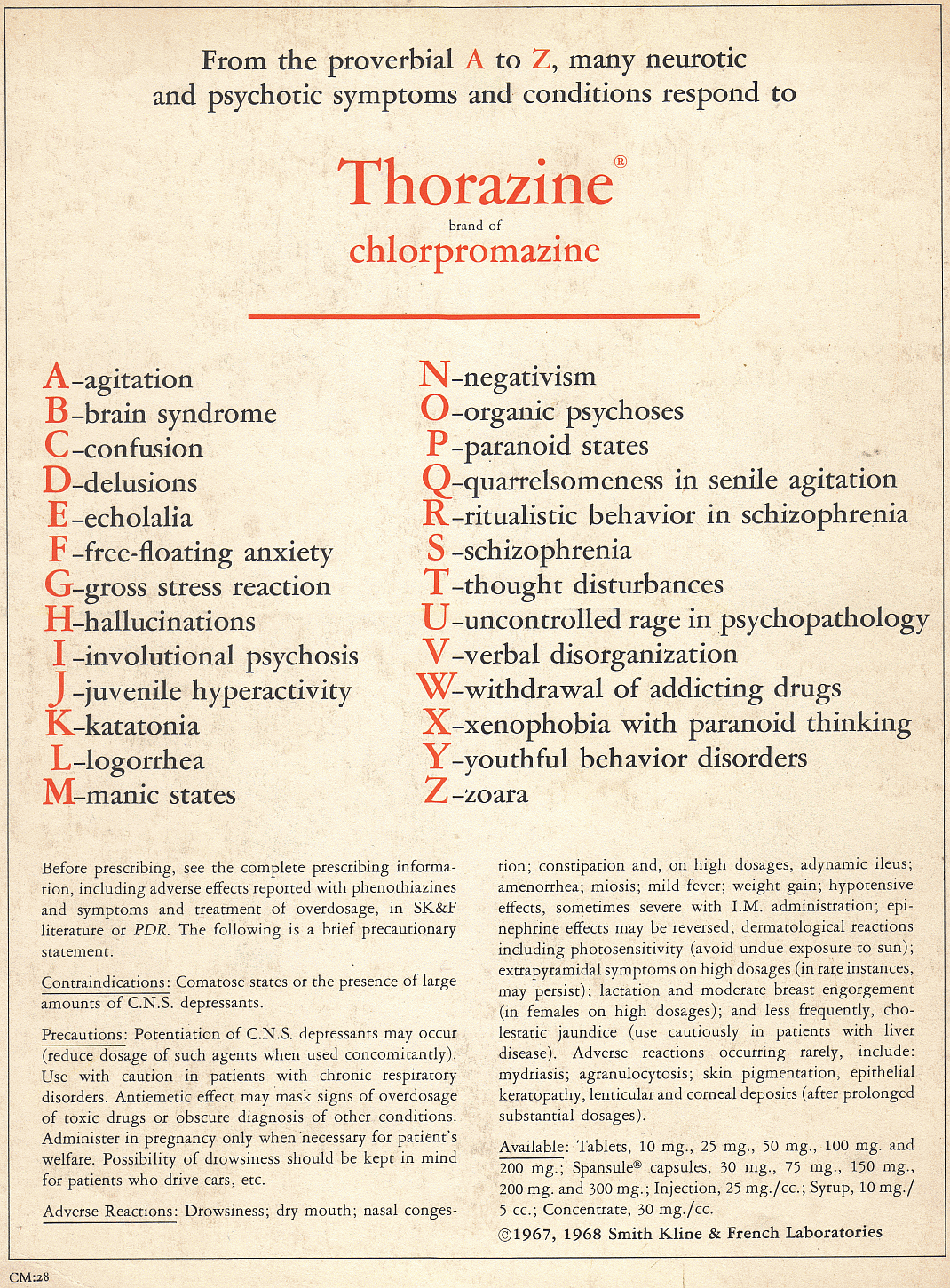

|
|
Thorazine advertisement, 1968. SK&F Psychiatric Reporter, No. 36, January-February 1968, back cover. From the proverbial A to Z, many neurotic and psychotic symptoms and conditions respond to Thorazine® brand of chlorpromazine A - agitation B - brain syndrome C - confusion D - delusions E - echolalia F - free-floating anxiety G - gross stress reaction H - hallucinations I - involutional psychosis J - juvenile hyperactivity K - katatonia L - logorrhea M - manic states N - negativism O - organic psychoses P - paranoid states Q - quarrelsomeness in senile agitation R - ritualistic behavior in schizophrenia S - schizophrenia T - thought disturbances U - uncontrolled rage in psychophathology V - verbal disorganization W - withdrawal of addicting drugs X - xenophobia with paranoid thinking Y - youthful behavior disorders Z - zoara Before prescribing, see complete prescribing information, including adverse effects reported with phenothiazines and symptoms and treatment of overdosage, in SK&F literature or PDR. The following is a brief precautionary statement. Contraindications: Comatose states or the presence of large amounts of C.N.S. depressants. Precautions: Potentiation of C.N.S. depressants may occur (reduce dosage of such agents when used concomitantly). Use with caution in patients with chronic respiratory disorders. Antiemetic effect may mask signs of overdosage of toxic drugs or obscure diagnosis of other conditions. Administer in pregnancy only when necessary for patient's welfare. Possibility of drowsiness should be kept in mind for patients who drive cars, etc. Adverse Reactions: Drowsiness; dry mouth; nasal congestion; constipation and, on high dosages, adynamic ileus; amenorrhea; miosis; mild fever; weight gain; hypotensive effects, sometimes severe with I.M. administration; epinephrine effects may be reversed; dermatological reactions including photosensitivity (avoid undue exposure to sun); extrapyramidal symptoms on high dosages (in rare instances, may persist): lactation and moderate breast engorgement (in females on high dosages); and less frequently, cholestatic jaundice (use cautiously in patients with liver disease). Adverse reactions occurring rarely, include: mydiriasis; agranulocytosis; skin pigmentation, epithelial keratopathy, lenticular and corneal deposits (after prolonged substantial dosages). Available: Tablets, 10 mg., 25 mg., 50 mg., 100 mg. and 200 mg.; Spansule® capsules, 30 mg., 75 mg., 150 mg., 200 mg. and 300 mg.; Injection, 25 mg./cc.; Syrup, 10 mg./5 cc.; Concentrate, 30 mg./cc. © 1967, 1968 Smith Kline & French Laboratories CM:28 |